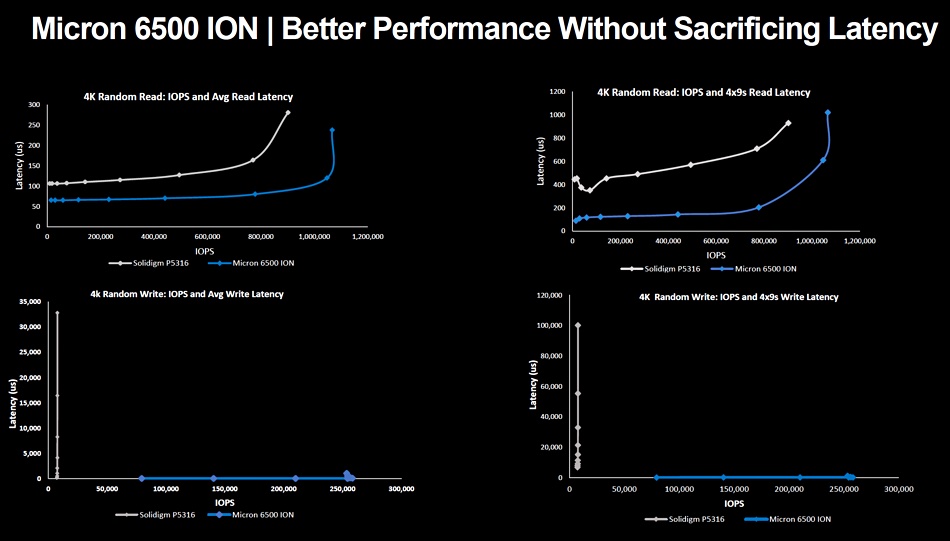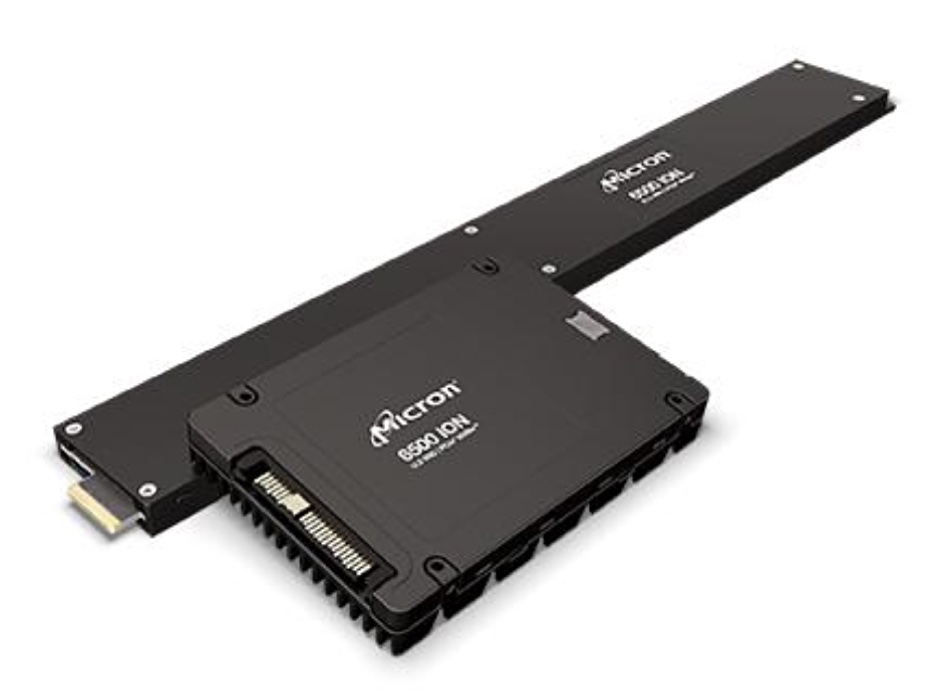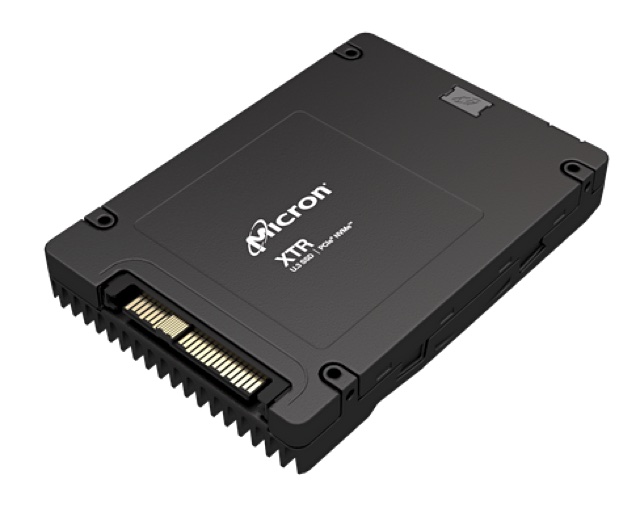Micron has built a TLC SSD with 232-layer tech that’s faster and more efficient than Solidigm’s lower cost QLC drives. It’s also launched a fast SLC SSD for caching.
SLC (1 bit/cell) NAND is the fastest flash with the longest endurance. TLC (3bits/cell) makes for higher-capacity drives using lower cost NAND but with slower speed and shorter working life. QLC (4 bits/cell) is lower cost NAND again but natively has slower speeds and less endurance. 3D NAND has layers of cells stacked in a die – the more layers the more capacity in the die and, generally, the lower the manufacturing cost. Solidigm and other NAND suppliers are shipping flash with less than 200 layers while Micron has jumped to 232 layers.

Alvaro Toledo, Micron VP and GM for datacenter storage, told us: “Very clearly, we’re going after QLC drives in the market like the [Solidigm] P5316. And what we can say is this drive will match that on price, but beats it on value by a mile and a half. We have 56 percent better power efficiency, at the same time giving you 62 percent more random reads.”
The power efficiency claim is based on the P5316 providing 32,000 IPS/watt versus Micron’s 6500 ION delivering 50,000 IPS/watt.
Micron provides a set of performance comparison charts versus the P5316:

Solidigm coincidentally launched an updated QLC SSD, the P5430, today. Micron will have to rerun its tests and redraw its charts.
We have crafted a table showing the main speeds and feeds of the two Solidigm drives and the 6500 ION – all PCIe 4 drives – for a quick comparison:

The 6500 ION has a single 30.72TB capacity point and beats both Solidigm QLC drives with its up to 1 million/200K random read/write IOPS performance, loses out on sequential read bandwidth of 6.8GB/sec vs Solidigm’s 7GB/sec, and regains top spot with a 5GB/sec sequential write speed, soundly beating Solidigm.
Toledo points out that 6500 ION supports 4K writes with no indirection unit. Solidigm’s P5316 “drive writes in 64K chunks.” This, Toledo claims, incurs more read, modify, write cycles as the 64K is mapped to the drive’s 4K pages.

Its capacity and cost means that “by lowering the barriers of entry, we see that the consolidation play will make a lot more sense right now. You can store one petabyte per rack unit, which gives you up to 35 petabytes per rack.”
Toledo says the 6500 ION is much better in terms of price/performance than QLC drives: “Just the amount of value that we’re creating here is gigantic.” You can use it to feed AI processors operating on data lakes with 9x better power efficiency than disk drives in his view. And it’s better than QLC drives too: “This ION drive is just absolutely the sweet spot, the Goldilocks spot in the middle, where for about 1.2, 1.3 watts per terabyte, you can get all the high capacity that you need fast enough to feed that [AI] beast with a very low power utilization.”
Download a 6500 ION product brief here.
XTR
The XTR is positioned as an affordable single-port caching SSD. Micron compares it to Intel’s discontinued Optane P800X series storage-class memory (SCM) drive, saying it has up to 44 percent less power consumption, 20 percent more usable capacity, and up to 35 percent of P5800X endurance at 20 percent of the cost.

It suggests using the XTR as a caching drive paired with its 6500 ION, claiming this provides identical query performance as an Optane SSD cache would provide. Toledo said: “We are addressing the storage-class memory workload that requires high endurance; this is not a low latency drive.”
Kioxia also has a drive it positions as an Optane-type device, the FL6, and Micron’s XTR doesn’t fare that well against it in random IO but does better in sequential reads, as a table shows:

Toledo says the FL6 is going after lower latency workloads than the XTR, but: “If you need to strive for endurance, the XTR can go toe to toe with a storage-class memory solution.”
Micron says the XTR has good security ratings – better than the Optane P5800X products, such as FIPS 140-3 L2 certification at the ASIC level – and provides up to 35 random DWPD endurance (60 for sequential workloads).







